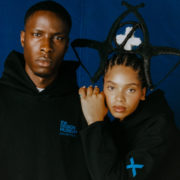Porter Robinson [@porterrobinson] & NFT Artist Jie Liou [@jie_liou] Drop Beautiful 3D Art Visualizer Video for Track, “dullscythe”
![Porter Robinson [@porterrobinson] & NFT Artist Jie Liou [@jie_liou] Drop Beautiful 3D Art Visualizer Video for Track, “dullscythe”](https://guap.co/wp-content/uploads/2021/08/poter_robinsonTER_1507-180x180.jpeg)
Words by: Matthew Griffiths
“dullscythe” sees the EDM and digital art spaces collide for its visualizer.
“dullscythe”, by Porter Robinson, is an unusual track. But then again, you could say that about a lot of Porter Robinson’s music. I remember being on a road trip with a few friends once, and I got talking to one of them about music. He told me he liked electronic music, so I told him I liked Porter Robinson. His response was something along the lines of – “that guy is intense”.
Featuring on his latest album, Nurture, Porter continues to break free of the boundaries of stylistic trends and genre (with intensity) on “dullscythe”. His relationship with EDM is something that he’s wrestled with musically and mentally in the past and continues to be vocal about today. Back in 2014, Porter expressed in an NME interview that he had problems with trying to shoehorn his music into a “danceable format”, since his goal musically was not to create something danceable, but beautiful.
When coming up with the live versions of his songs for his Nurture live shows, he admitted that this album was, in many places, about how hard it was to be mentally in a place where he’s at work, without it feeling like work. Porter wants to create art that comes from a place of true exploration and experimentation.
This rejection of the conventional EDM song format – intro, build up, drop, verse, build up, drop etc – and his desire for uniqueness in his creativity display themselves in both the track and visualizer for “dullscythe”. The rhythm, if you can catch it, is like fireworks going off in their irregularity. The video mirrors these odd rhythms in beautiful 3D renderings of landscapes that combine urban architecture and nature, with bright shapes illuminating and rapidly changing size to the beat. On a first listen, the way my ear struggled to grasp what the song was doing rhythmically reminded me of the song “Emerald Rush” by Jon Hopkins, in which the melody progresses at unexpected times.

Naturally, I was intrigued by what I was both seeing and hearing. I wanted to know more, so I got in touch with Jie Liou, the Motion Graphic & 3D Concept Artist who created the video, and asked him for an interview.
So how’d the collaboration with Porter come about?
Jie Liou: Porter saw my work, “On Earth Series”, on Behance and reached out for a similar theme. It was a great time to work with him. He has evident thoughts about what he wanted and is very kind to artists.
Nature, and particularly overgrowth seem to be a theme in the video for “dullscythe”, as well as being a recurring theme in your other work. Is there anything behind that?
It’s kind of related to the previous question, I’ve created realistic environments with abstract symbols in my recent projects. The thoughts behind the ideas are about exploring the relationship between reality and the virtual world. What’s fascinating is – Porter describes nature with electronic music, and I make the natural with digital art.
I see you have NFTs available on Foundation. As it’s a marketplace that allows artists to sell on an invite-only basis, was it a difficult process to get an invitation?
When NFTs were trending in early 2021, it wasn’t easy to get the invitations. Most NFT platforms are invitation only.
Has the recent surge in the popularity of NFTs impacted your career?
Of course. I think NFT is changing the digital art market. We usually create works with our patience and love for creating the imagined world in our head. But now, the income of NFT sales can support us for bigger projects and further our journey.
Do you make music yourself? Wanna plug it? Haha.
It’s hilarious. Porter’s music has been one of my favourites since I started listening to electronic music years ago. I loved “Spitfire“ so much, and I even found a DJ to teach me to make a similar music style. But eventually, I chose my path as a visual artist. If I did want to make music, I think I’d start with modular. It’s more dynamic and experimental to me. Thanks for your time!





![ZINO VINCI’S ‘FILTHY & DISGUSTING’EP BRINGS YOU TO THE CORE OF THE ARTIST [@ZinoVinci]](https://guap.co/wp-content/uploads/2023/10/Zino-4.jpg)




